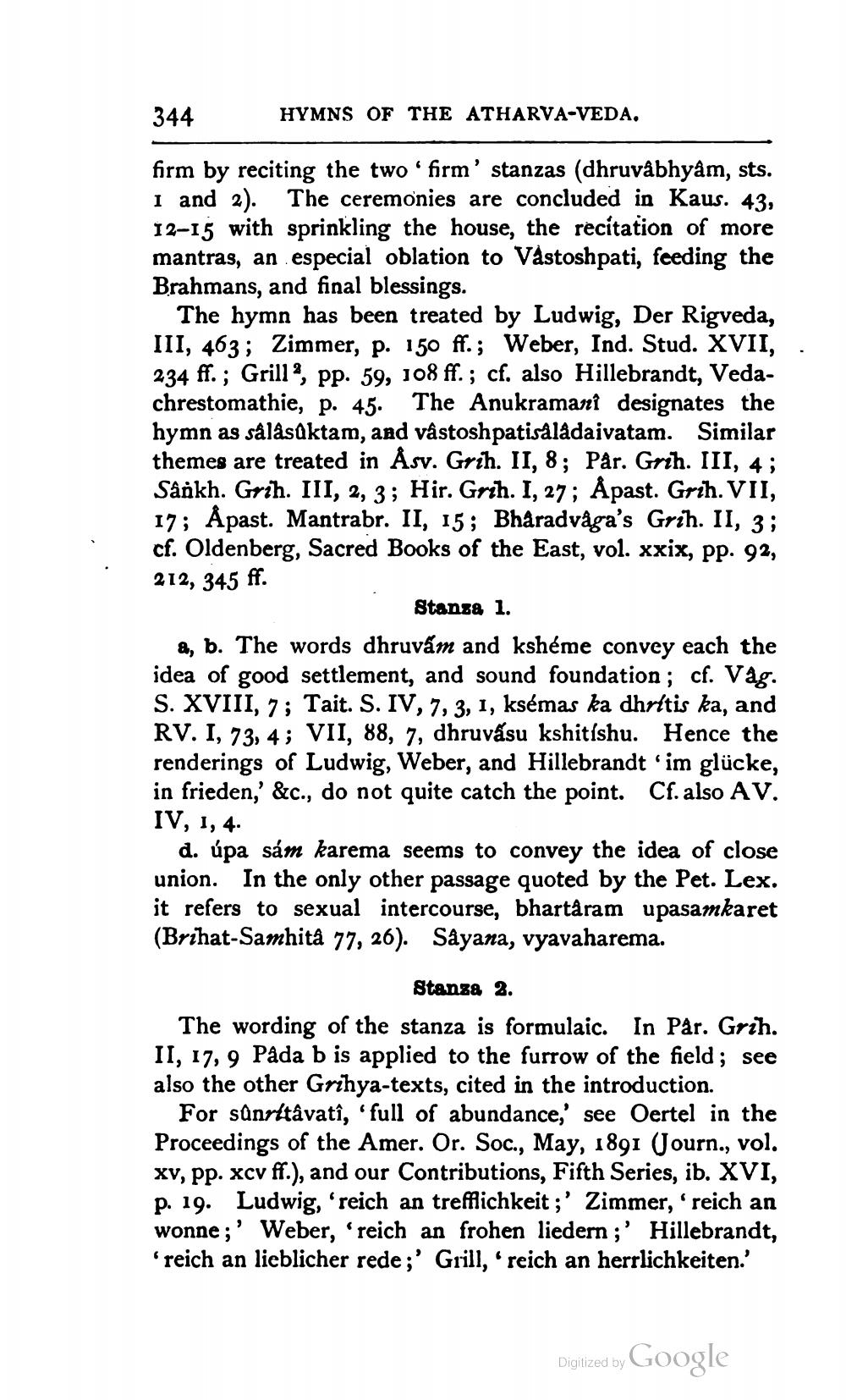________________
344
HYMNS OF THE ATHARVA-VEDA.
firm by reciting the two firm' stanzas (dhruvabhyâm, sts. 1 and 2). The ceremonies are concluded in Kaus. 43, 12-15 with sprinkling the house, the recitation of more mantras, an especial oblation to Vastoshpati, feeding the Brahmans, and final blessings.
The hymn has been treated by Ludwig, Der Rigveda, III, 463; Zimmer, p. 150 ff.; Weber, Ind. Stud. XVII, 234 ff.; Grill", pp. 59, 108 ff.; cf. also Hillebrandt, Vedachrestomathie, p. 45. The Anukramanî designates the hymn as sålåsaktam, and vâstoshpatisålådaivatam. Similar themes are treated in Åsv. Grih. II, 8; Pår. Grih. III, 4; Sankh. Grih. III, 2, 3; Hir. Grih. I, 27; Åpast. Grih. VII, 17; Åpast. Mantrabr. II, 15; Bharadvåga's Grih. II, 3; cf. Oldenberg, Sacred Books of the East, vol. xxix, pp. 92, 212, 345 ff.
Stansa 1. a, b. The words dhruvám and kshéme convey each the idea of good settlement, and sound foundation; cf. Våg. S. XVIII, 7; Tait. S. IV, 7, 3, 1, ksémas ka dhritis ka, and RV. I, 73, 4; VII, 88, 7, dhruvasu kshitishu. Hence the renderings of Ludwig, Weber, and Hillebrandt'im glücke, in frieden,' &c., do not quite catch the point. Cf. also AV. IV, 1, 4.
d. úpa sám karema seems to convey the idea of close union. In the only other passage quoted by the Pet. Lex. it refers to sexual intercourse, bhartaram upasamkaret (Brihat-Samhita 77, 26). Sâyana, vyavaharema.
Stanza 2. The wording of the stanza is formulaic. In Pår. Grih. II, 17, 9 Påda b is applied to the furrow of the field; see also the other Grihya-texts, cited in the introduction.
For sanrltavatî, 'full of abundance,' see Oertel in the Proceedings of the Amer. Or. Soc., May, 1891 (Journ., vol. XV, pp. xcv ff.), and our Contributions, Fifth Series, ib. XVI, p. 19. Ludwig, 'reich an trefflichkeit ;' Zimmer, 'reich an wonne;' Weber, 'reich an frohen liedern;' Hillebrandt, ' reich an lieblicher rede;' Grill, . reich an herrlichkeiten.'
Digized by Google
Digitized by




